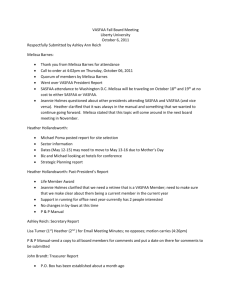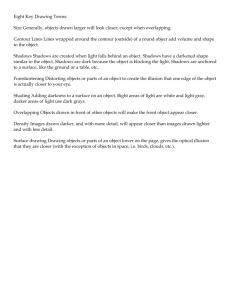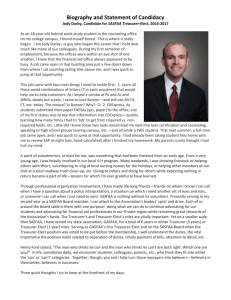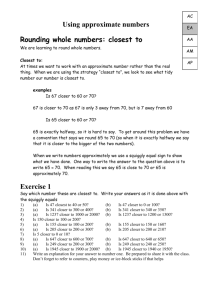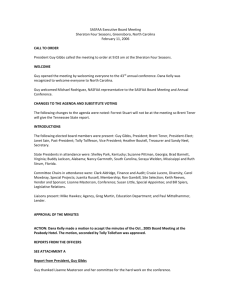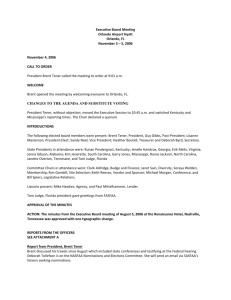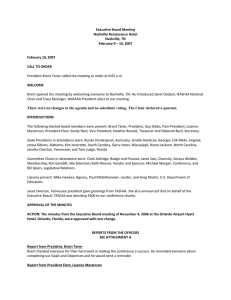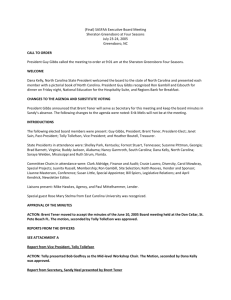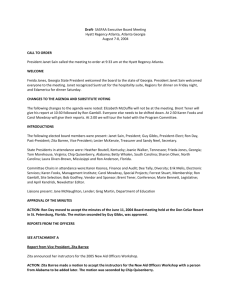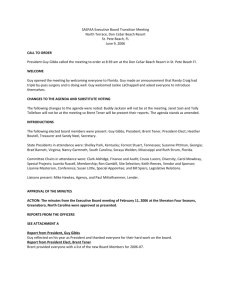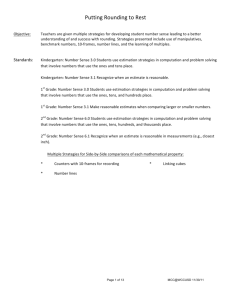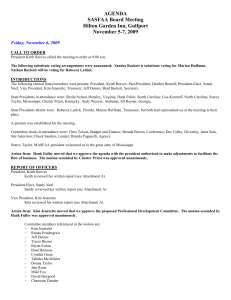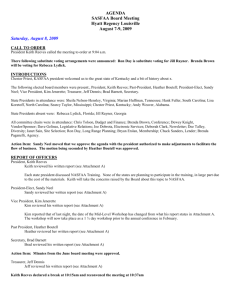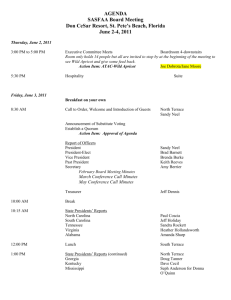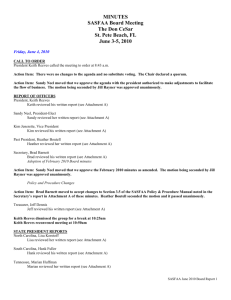Normal Cultures by Michael O`Grady
advertisement
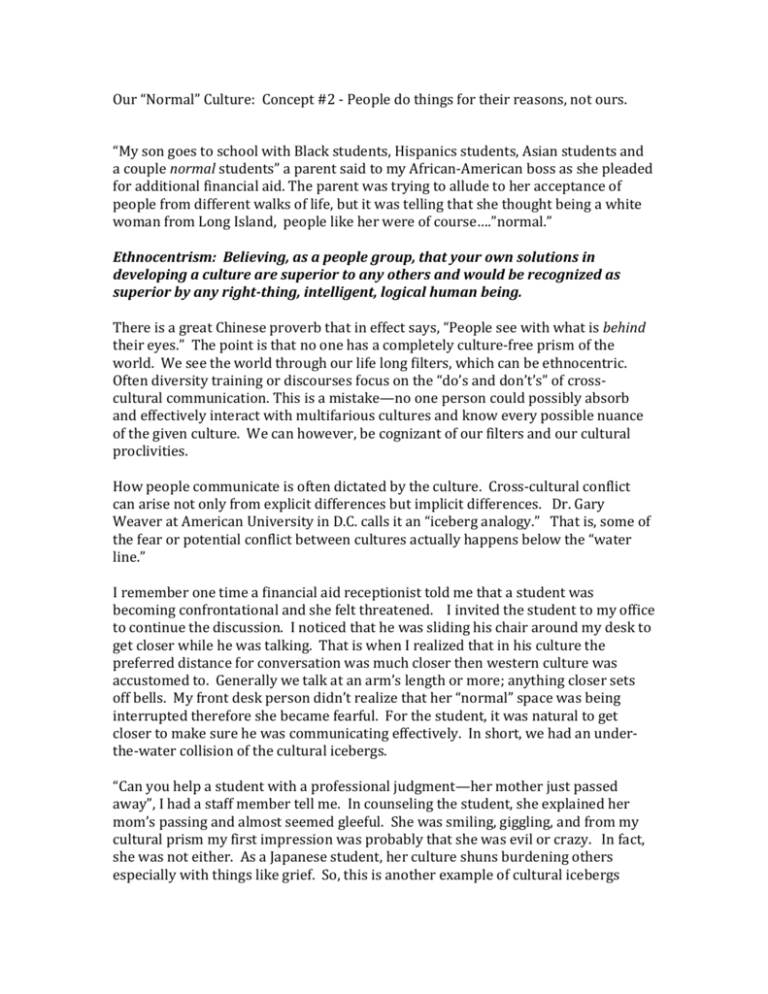
Our “Normal” Culture: Concept #2 - People do things for their reasons, not ours. “My son goes to school with Black students, Hispanics students, Asian students and a couple normal students” a parent said to my African-American boss as she pleaded for additional financial aid. The parent was trying to allude to her acceptance of people from different walks of life, but it was telling that she thought being a white woman from Long Island, people like her were of course….”normal.” Ethnocentrism: Believing, as a people group, that your own solutions in developing a culture are superior to any others and would be recognized as superior by any right-thing, intelligent, logical human being. There is a great Chinese proverb that in effect says, “People see with what is behind their eyes.” The point is that no one has a completely culture-free prism of the world. We see the world through our life long filters, which can be ethnocentric. Often diversity training or discourses focus on the “do’s and don’t’s” of crosscultural communication. This is a mistake—no one person could possibly absorb and effectively interact with multifarious cultures and know every possible nuance of the given culture. We can however, be cognizant of our filters and our cultural proclivities. How people communicate is often dictated by the culture. Cross-cultural conflict can arise not only from explicit differences but implicit differences. Dr. Gary Weaver at American University in D.C. calls it an “iceberg analogy.” That is, some of the fear or potential conflict between cultures actually happens below the “water line.” I remember one time a financial aid receptionist told me that a student was becoming confrontational and she felt threatened. I invited the student to my office to continue the discussion. I noticed that he was sliding his chair around my desk to get closer while he was talking. That is when I realized that in his culture the preferred distance for conversation was much closer then western culture was accustomed to. Generally we talk at an arm’s length or more; anything closer sets off bells. My front desk person didn’t realize that her “normal” space was being interrupted therefore she became fearful. For the student, it was natural to get closer to make sure he was communicating effectively. In short, we had an underthe-water collision of the cultural icebergs. “Can you help a student with a professional judgment—her mother just passed away”, I had a staff member tell me. In counseling the student, she explained her mom’s passing and almost seemed gleeful. She was smiling, giggling, and from my cultural prism my first impression was probably that she was evil or crazy. In fact, she was not either. As a Japanese student, her culture shuns burdening others especially with things like grief. So, this is another example of cultural icebergs colliding below the water line. She was sparing me from her grief, perhaps overcompensating with a forced cheerfulness. Cross-cultural misunderstanding can best be understood through a communication model presented by communication theorists Shannon and Weaver, which include a “Sender”, an “Encoder.” We are constantly transmitting messages to someone else’s “Decoder” and “Receiver.” Trouble arises when the “Encoders” and “Decoders” of the two parties are vastly different. Organizations have the same communications model. Financial aid offices encode information through award letters, portals, snail mail, email etc. It is important to remind ourselves this is not culture free. In most cases, it is a very western/higher education model, which might be seen as not very human or accessible, particularly to first generation students. Dr. Neal Rasim did a study of over 1600 universities and colleges, and he gave over 51% a “D” or an “F” in retention. Surprisingly, his study uncovered that financial aid was not the number one reason for students leaving these institutions, it was customer service. So as we create access for a changing demographic, knowing our propensities are not “normal” is extremely important to educating the next generation. For 24 years I performed in an R&B band in the Washington, D.C. area; and yes, some of our “gigs” included NASFAA, SASFAA and VASFAA. If I were being compensated for each time we played the electric slide, I would be retired! Some of our largest clients were Historically Black Colleges and Universities (HBCU’s) and many of their sororities and fraternities. Most of our performances for HBCU’s were held in Prince George’s County, one of the nation’s most affluent predominately African American counties. I was thinking that if a Martian shadowed me for 6 months what would be his or her impressions. Me: So Gadzu, what are you going to report back to your leadership? Gadzu: There are lots of Thai restaurants on earth. Me: What else Gadzu? Gadzu: African –Americans are very rich. Me: How do you get that takeaway? Gadzu: Well, attending your “gigs” it seems these organization raise a lot of money. The parking lot is filled with BMW’s and Mercedes—and everyone is dressed extremely formal. Me: Pause. Me: You know, Gadzu, the affluence of our audiences is not determined by their culture or race. Gadzu: Well what is the common bond then? Me: They all went to college. Michael O’Grady has served as diversity committee chair for VASFAA, NCASFAA and SASFAA and currently serves on the VASFAA FOCUS Committee.

